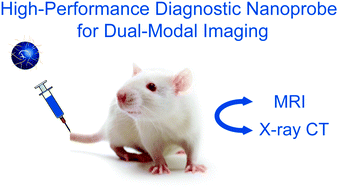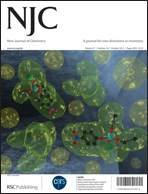Molecular imaging techniques have shown increasing potential in the definition and imaging of the structure and function of biological systems for preclinical applications. Herein, we report a high-quality dual-modal imaging platform based on water-stable gadolinium-doped Yb(OH)CO3 nanoparticles. These nanoprobes were prepared via a one-pot method, meeting the criteria for a biomedical material. Compared with iobitridol, which is routinely used in clinical applications, our Yb(OH)CO3:Gd nanoparticles provided greatly enhanced contrast at regularly used clinical voltages. By virtue of their doping with gadolinium, these well-designed nanostructures could also be applied as an excellent MRI nanoprobe, which provided similar biodistribution results with our CT experiments. Detailed in vitro and in vivo toxicological study indicated that the uniformly sized nanoparticles possessed high biocompatibility and also low toxicity, making them safe for clinical use. The concept presented here shows great potential for the design and synthesis of nanoprobes with high imaging efficiency and low systemic toxicity.

You have access to this article
 Please wait while we load your content...
Something went wrong. Try again?
Please wait while we load your content...
Something went wrong. Try again?


 Please wait while we load your content...
Please wait while we load your content...